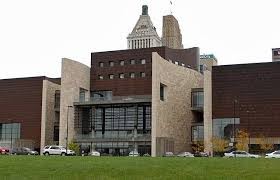National Underground Railroad Freedom Center
Introduction
Text-to-speech Audio
Images
The National Underground Railroad Freedom Center opened in 2004.

Backstory and Context
Text-to-speech Audio
The freedom museum has both permanent and traveling exhibits giving its visitors a chance to uncover more and more history each time they visit. Currently, the museum displays these exhibits The Solomon Northup Tour; Celebrating the March on Washington; The Struggle Continues; From Slavery to Freedom; ESCAPE!; The Slave Pen; Brothers of the Borderland; Invisible: Slavery Today; Everyday Freedom Heroes; Suite for Freedom. <br/ >
A statement from the website, "Our purpose is to tell the story of the struggle for freedom in the United States through exhibits and programs that focus on America's battle to rid itself of the ugly scourge of slavery and treat all its citizens with respect and dignity."
The Solomon Northup Tour provides the historical context for the movie "12 Years a Slave." It depicts what Northup might have experienced as a slave and the role of abolitionists in the movies time set. Portrayed in the From Slavery to Freedom display three centuries of the history of slavery are depicted to express the fight from the start to the long-awaited end of slavery. In this hands-on and family-friendly exhibit, ESCAPE! visitors get a chance to role-play and feel just a glimpse of what slaves once endured.
The Slave Pen is a piece of local history for this particular part of the country. Taken from Mason County, Kentucky, just 60 miles from the museum this structure was built for holding slaves during trades and guests of the Freedom Center have the opportunity to step inside for a look into the past. Other exhibits provide the intense history of slavery through a variety of different ways; including short documentaries and hands-on displays.
For those interested in a history of the Underground Railroad that emphasizes the agency of African Americans within their own history (instead of emphasizing the role of a handful of atypical but certainly intrepid white abolitionists) the three books linked to this page are for you.



